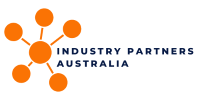
Managing Constraints to Optimise Outcomes
Training Provider: Lewis Trigger - Management & Consultants
Delivery Method: Public, Online, On-site

In this 2-day Constraint Innovation workshop, International CI expert Lewis Trigger shares common sense, practical solutions, drawn from the advanced management doctrine Theory of Constraints (TOC) to address the challenge of “Unlocking Value” via leveraging your Constraints be it Resource Constraints, a Policy Constraint, as well as a Market Constraint.
The workshop focuses on 3 critical management challenges, providing Constraint Innovations breakthroughs in Leveraging Constraints, KPI’s, Synchronising Shared Resources in a dynamic environment.
Day 1: The Building Blocks of Constraint Innovation
- Defining the System’s "Goal".
- Identifying the constraint (i.e. the "Bottleneck")
- Exploiting the Constraint (i.e. "Take what you’ve got to get 100% use of the constraint")
- Subordinating to the Constraint (i.e. "Rearrange others to what you need to maintain 100% of the constraint")
- Elevating the Constraint (i.e. "Innovate to get greater than 100%)
- Identifying the new Constraint - continual improvement loop.
Day 2: Morning: Managing performance – KPI’s
Day 2: Afternoon: Synchronising Shared Resources
What Will I learn:
How to effectively manage your bottleneck/constraints
What Outcomes will the training provide?
- Meeting commitments: deliverables on time and within budget meeting service levels within cost
- Reducing downtime of key facilities and equipment.
- Enhance service levels, greater inventory turnover, and shorten lead times. Enhancing the ability to improve system performance without incurring additional costs.
- Improve quality by focusing our corrective and preventative actions on what counts most.
- A shift in thinking from localised efficiency towards system effectiveness.
- Focusing management efforts on where it counts most.
- Allocating resources to where it counts most.
- Enhance teamwork and job satisfaction.
Who will benefit from attending this training?
Managers at all levels from Operations, Maintenance, Supply Chain, and Engineering Functions.
What is the duration of this training?
2 Days. For online learning, the sessions are broken up into 3 hours slots that are spread over different days.
Click here to listen to Lewis's message.
Training Overview
What will I learn?
- The Agile Mindset and Principles: The Agile manifesto and mindset is where it all began in 2001 and soon grew into the practices behind one of the fastest-growing project management and product development methodologies of the new millennium. Here, you will explore this and its contrast to other project approaches, including the 12 clarifying principles.
- The Agile Core Practices: These are the core Agile practices from the Agile Practice Guide and are a great way to see if a team is really Agile, even when they may call themselves something different. This is direct from the Project Management Institute and Agile Alliance.
- Agile and Lean Frameworks: These are the Agile and Lean frameworks you will come across in your Agile career, ranging from popular and highly used team frameworks through to program and enterprise level frameworks.
- Delivering in an Agile Environment: This section describes Agile delivery and using Agile to implement an Agile way of work in your organisation.
- Bonus Content: Learn through real-life scenarios and a bonus Agile Project Charter template you can use immediately.
What outcomes will the training provide?
This training program delivers the following outcomes for participants and the organisation:
- Plan and prioritise own work tasks, including monitoring and obtaining feedback on personal work performance.
- Lead teams and individuals by modelling high standards of conduct to reflect the organisation’s standards and values.
- Facilitate and apply communication strategies in the workplace.
- Determine individual and team development needs and facilitate the development of the workgroup.
- Effectively lead and facilitate a team in a workplace.
- Use leadership to promote team cohesion including motivating, mentoring, coaching, and developing the team and forming the bridge between the management of the organisation and team members.
- Implement operational plans by planning and acquiring resources, monitoring, and adjusting operational performance and providing reports on performance, as required.
- Lead and manage continuous improvement systems and processes with a particular emphasis on the development of systems and the analysis of information to monitor and adjust performance strategies, and to manage opportunities for further improvements.
- Establish and develop a professional mentoring relationship with an individual in the workplace.
- Identify and implement ways of promoting innovation within team environments in the workplace.
- Implement and monitor an organisation’s work health and safety (WHS) policies, procedures and programs in the relevant work area in order to meet legislative requirements.
- Identify business risks and to apply established risk management processes to a defined area of operations that are within the responsibilities and obligations of the role.
Who will benefit from this training?
- Executive Managers – wanting to understand how Agile can provide a competitive advantage
- Senior Managers – providing oversight of project teams, considering Agile as a capability, or acting as Project Sponsors, Product Owners or Scrum Masters
- CI / BI Managers – seeking unique approaches to product and service development
- Project Managers – looking to expand their skill sets and knowledge
- Business and process analysts
- IT staff
- L&D staff
- Team members participating in or supporting Agile projects
- All employees who want a basic understanding of Agile, the language, the concepts, the opportunity.
What is the duration of this training?
3 - 4 hrs
![]()

.png?width=190&name=IPA%20Logo%20Transparent%20(Hi-Res).png)


